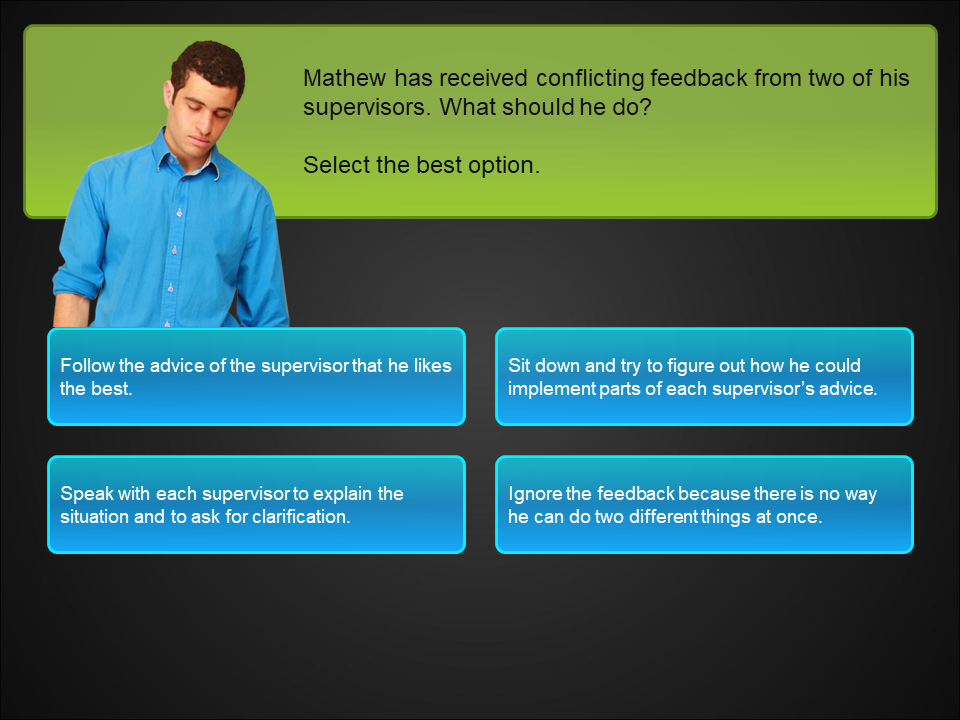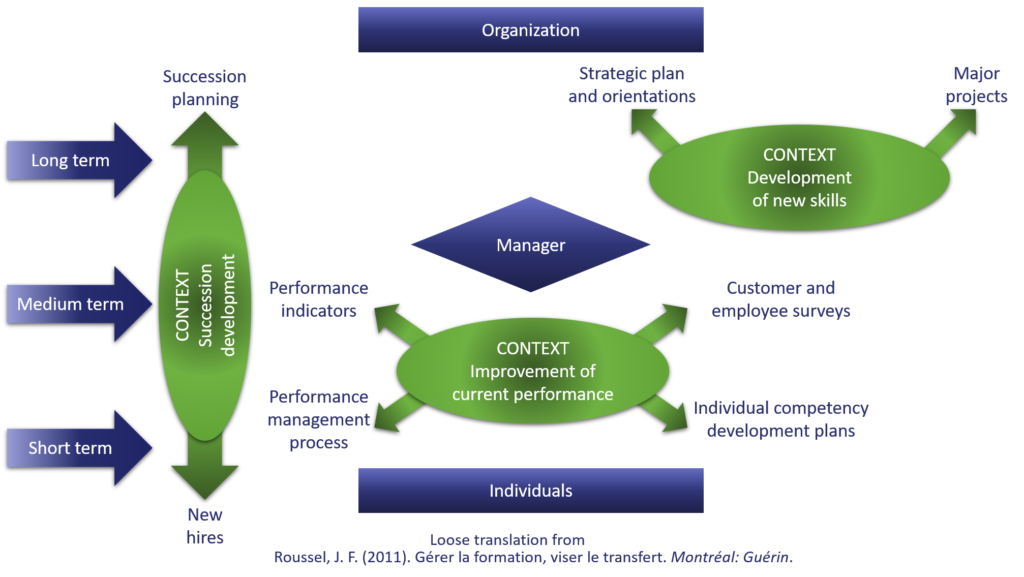
By Sophie Lanoix
In workplace training, learners are generally tested less than in schools. First, training is rarely used to certify learners and move them from one level to another. Workplace training is mainly used to equip people to do their jobs better and, in this sense, the real test after training is the person’s performance in their work context.
In workplace training, learners are generally tested less than in schools. First, training is rarely used to certify learners and move them from one level to another. Workplace training is mainly used to equip people to do their jobs better and, in this sense, the real test after training is the person’s performance in their work context.
In classroom training, quizzes are rarely taken at the end of the day. In online training, on the other hand, there is a tendency to almost systematically quiz after training. Is it necessary to do so? How do quizzes affect retention? This article answers this question.
The Article
Title: Does pre-testing promote better retention than post-testing?
Authors: Alice Latimier, Arnaud Riegert, Hugo Peyre, Son Thierry Ly, Roberto Casati and Franck Ramus
Publication Date: September 24, 2019
The Experiment
The research team divided the participants into three groups that were equivalent in terms of demographics and prior knowledge of the subject. They assigned a different study method to each group, then tested retention with an exam seven days after the training day. Participants could not review the content between the training day and the final test day. The researchers then compared the results of the three groups to the final test to draw conclusions.
The subject studied was DNA and the content was presented in the form of seven online reading capsules. The final test focused on the content of the reading, with some questions on content that had not been tested in the seven quizzes.

The Findings
- Quizzes, whether taken before or after reading an online course, increase content retention.
- Quizzes taken after reading the online course increase retention more than quizzes taken before reading the online course
- Quizzes taken after reading the online course increase the retention of materials related to the content, but not tested.
Why is this of interest to us, workplace training designers?
Let’s start by asking ourselves why we have quizzes in courses. Generally, there are no consequences for learners who do not achieve the pass mark. At most, they are asked to retake training. So why have a quiz at all? Simply to increase retention.
During a quiz, whether done before or after the training, learners must activate their neurons to remember the content or make links between different elements stored in their memory. The more you try to remember something, the easier it becomes to remember. The primary reason why quizzes help retention is simply that they are an active method of learning. And all learning activities that require learners to remember a content increase retention, whether it is a quiz question, a case study, an association, a sequencing question, etc.
Then, let’s ask ourselves why have quizzes before training if quizzes after training are more effective for retention? First, pre-training quizzes also increase retention. The simple fact of trying to generate an answer, even if that answer is wrong, reinforces the path between the question and the correct answer and promotes deep processing of information.
However, we must be careful! While post-training quizzes increase retention of untested content during training, pre-training quizzes have the opposite effect. During learning, learners tend to focus on tested content and pay less attention to untested content before training, reducing the retention of untested content.
What should I change in my professional practice?
When designing training, all learning activities must have a purpose. Quizzes before and after the training are no exception. If we decide to add a quiz to training, we must know why we are doing it and how it will serve learning.
Here are some key actions I take away from this article:
- Add quizzes to classroom training. Not to make a learner pass or fail, but as an active learning activity that forces the learner to recall the content and consolidate the learning.
- Add quizzes to online courses to consolidate learning. These quizzes can be at the end of the training, but also within the training modules, at the end of each section, for example.
- Add a pre-training quiz to focus the learner’s attention on specific elements of the training, especially if it has been difficult to reduce the less essential elements of information.
- Ensure that quizzes cover the essential content of the training, especially if they are done before the training.
In short, we must continue to ensure that our training programs are as active as possible and include a wide variety of activities, including quizzes where necessary.
Reference and link to the article
Latimier, A., Riegert, A., Peyre, H., Ly, S., Casati, R., & Ramus, F. (2019). Does pre-testing promote better retention than post-testing?. Npj Science Of Learning, 4(1).
https://doi.org/10.1038/s41539-019-0053-1







